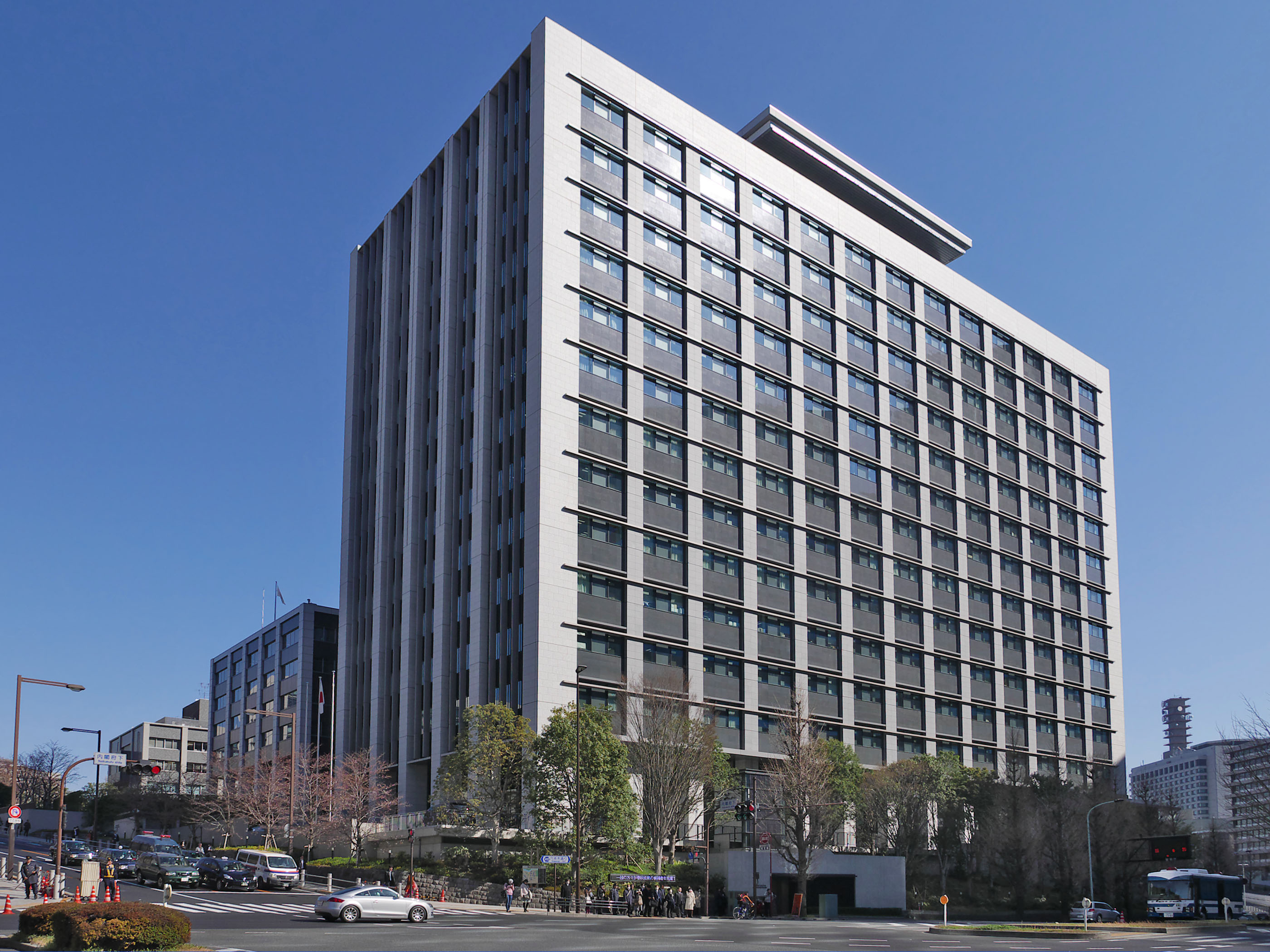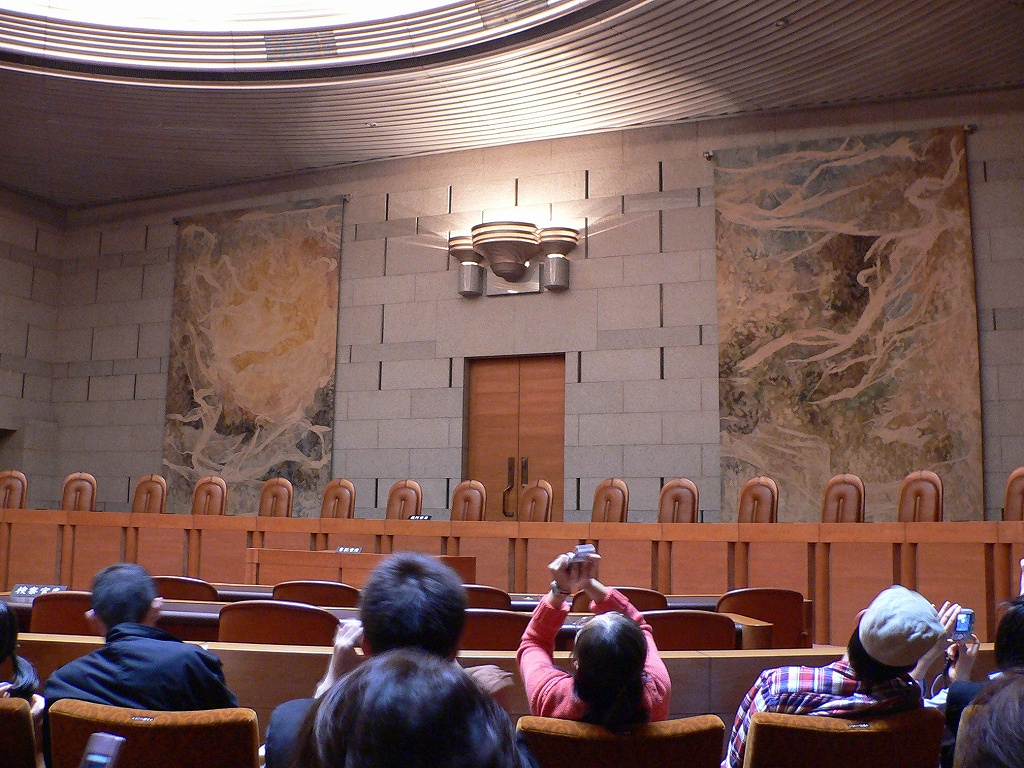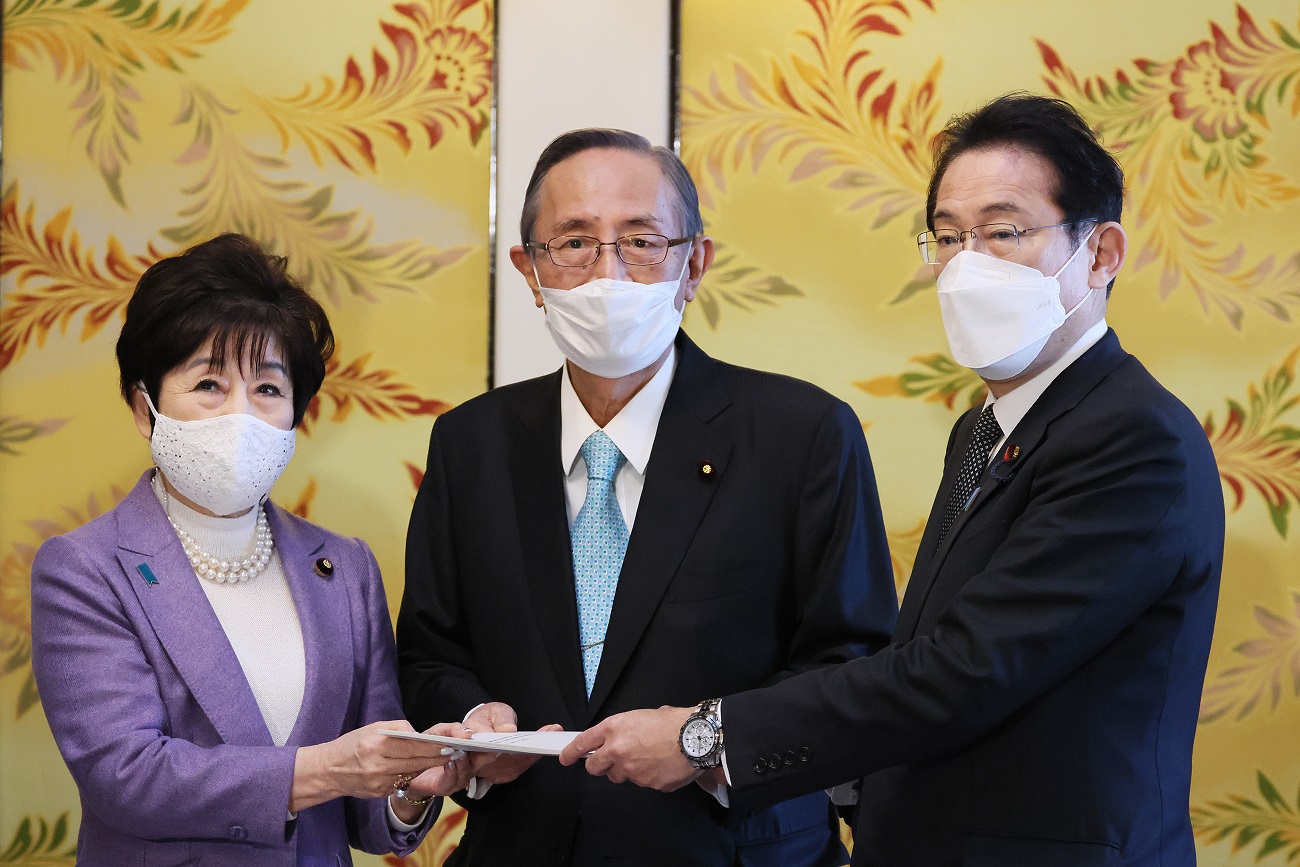|
Abdication Of Emperor Akihito
The 2019 Japanese imperial transition occurred on 30 April 2019 when the then 85-year-old Emperor Akihito of Japan abdicated from the Chrysanthemum Throne after reigning for 30 years, becoming the first Emperor of Japan to do so since Emperor Kōkaku in 1817. This marked the end of the Heisei era and the inception of the Reiwa era, and saw numerous festivities leading up to the accession of his eldest son and successor, Emperor Naruhito. The Enthronement Ceremony took place on 22 October 2019. Akihito's younger son, Prince Akishino, is his brother's heir presumptive. The ceremony cost 16.6 billion yen. Background In 2010, Emperor Akihito informed his advisory council that he would eventually like to retire from his position. However, no action was taken by senior members of the Imperial Household Agency. On 13 July 2016, national broadcaster NHK reported that the Emperor wished to abdicate in favour of his eldest son, Crown Prince Naruhito, within a few years. Se ... [...More Info...] [...Related Items...] OR: [Wikipedia] [Google] [Baidu] |
Mount Fuji
is an active stratovolcano located on the Japanese island of Honshu, with a summit elevation of . It is the highest mountain in Japan, the second-highest volcano on any Asian island (after Mount Kerinci on the Indonesian island of Sumatra), and List of islands by highest point, seventh-highest peak of an island on Earth. Mount Fuji Hōei eruption, last erupted from 1707 to 1708. It is located about southwest of Tokyo, from where it is visible on clear days. Its exceptionally symmetrical cone, which is snow field, covered in snow for about five months of the year, is a Japanese cultural icon and is frequently depicted in art and photography, as well as visited by sightseers, hikers and mountain climbers. Mount Fuji is one of Japan's along with Mount Tate and Mount Haku. It is a List of Special Places of Scenic Beauty, Special Historic Sites and Special Natural Monuments, Special Place of Scenic Beauty and one of Japan's Monuments of Japan, Historic Sites. It was added to th ... [...More Info...] [...Related Items...] OR: [Wikipedia] [Google] [Baidu] |
Cabinet Office (Japan)
The (CAO) is an agency of the Cabinet of Japan. It is responsible for handling the day-to-day affairs of the Cabinet. The Cabinet Office is formally headed by the Prime Minister of Japan, Prime Minister. Ministers History The Cabinet Office was established on 6 January 2001, following the 2001 Central Government Reform, reorganization of the central government. It was created to assist in the planning and overall coordination of government policies led by the Cabinet (including the Cabinet Secretariat). The Cabinet Office is different from other ministries and agencies, as it is installed in the Cabinet and includes several Ministers of State called Minister of State for Special Missions. Early on, some argued it was inappropriate to use the name Cabinet Office because "it is an organization that divides and manages administrative affairs and not the cabinet itself". The National Administrative Organization Law does not apply, instead, all necessary matters are stipulat ... [...More Info...] [...Related Items...] OR: [Wikipedia] [Google] [Baidu] |
Judicial Disqualification
Recusal is the legal process by which a judge, juror, or other adjudicator steps aside from participating in a case due to potential bias, conflict of interest, or appearance of impropriety. This practice is fundamental to ensuring fairness and impartiality in legal proceedings, preserving the integrity of the judiciary, and maintaining public confidence in the legal system. Historical and modern legal frameworks outline specific grounds for recusal, such as personal or financial conflicts of interest, prior involvement in a case, or demonstrated bias. Applicable statutes or canons of ethics may provide standards for recusal in a given proceeding or matter. Providing that the judge or decision-maker must be free from disabling conflicts of interest makes the fairness of the proceedings less likely to be questioned, and more likely that there is due process. Recusal laws and guidelines are established in various legal systems worldwide, including the United States, where they ar ... [...More Info...] [...Related Items...] OR: [Wikipedia] [Google] [Baidu] |
Imperial House Of Japan
The is the reigning dynasty of Japan, consisting of those members of the extended family of the reigning emperor of Japan who undertake official and public duties. Under the present constitution of Japan, the emperor is "the symbol of the State and of the unity of the people". Other members of the imperial family perform ceremonial and social duties, but have no role in the affairs of government. The duties as an emperor are passed down the line to their male children. The Japanese monarchy is the oldest continuous hereditary monarchy in the world. The imperial dynasty does not have a name, therefore its direct members do not have a family name. Origins and name The imperial house recognizes 126 monarchs, beginning with Emperor Jimmu (traditionally dated to 11 February 660 BCE), and continuing up to the current emperor, Naruhito. However, scholars have agreed that there is no evidence of Jimmu's existence, that the traditional narrative of the imperial family's founding is ... [...More Info...] [...Related Items...] OR: [Wikipedia] [Google] [Baidu] |
Supreme Court Of Japan
The , located in Hayabusachō, Chiyoda, Tokyo, is the highest court in Japan. It has ultimate judicial authority to interpret the Japanese constitution and decide questions of national law. It has the power of judicial review, which allows it to determine the constitutionality of any law or official act. History The modern Supreme Court was established in Article 81 of the Constitution of Japan in 1947. There was some debate among the members of the SCAP legal officers who drafted the constitution and in the Imperial Diet meeting of 1946 over the extent of the power of the judiciary, but it was overshadowed by other major questions about popular sovereignty, the role of the emperor, and the renunciation of war. Although the ratified wording in Article 81 states that the court possesses the power of judicial review, a part of the court's early history involved clarifying the extent of this power. In 1948, the court declared that the constitution meant to establish the type ... [...More Info...] [...Related Items...] OR: [Wikipedia] [Google] [Baidu] |
Chief Justice Of Japan
The is the chief judge of the Supreme Court of Japan and is the head of the judicial branch of the Japanese government. The Chief Justice is ceremonially appointed by the Emperor of Japan The emperor of Japan is the hereditary monarch and head of state of Japan. The emperor is defined by the Constitution of Japan as the symbol of the Japanese state and the unity of the Japanese people, his position deriving from "the will of ... after being nominated by the Cabinet; in practice, this is following the recommendation of the retiring Chief Justice. List of Chief Justices of the Supreme Court of Japan See also * List of justices of the Supreme Court of Japan References External linksOfficial WebsiteOfficial Profile{{in lang, en Law of Japan Chief Justices ... [...More Info...] [...Related Items...] OR: [Wikipedia] [Google] [Baidu] |
Grand Steward
The is the head department of the Imperial Household Agency of Japan. History The origins of the structure of the Imperial Household can be traced back to the reign of Emperor Monmu, with the organisation of the government structure in 701 AD. Prince Naruhito, in May 2004, criticized the then-grand steward, Toshio Yuasa, for putting pressure on Masako Owada, Naruhito's wife, to bear a male child. At a press conference, Naruhito said that his wife had "completely exhausted herself" trying to adapt to royal life, and added "there were developments that denied Masako's career (up to our marriage) as well as her personality". Japan Policy and Politics, 24 May 2004 Organisation The is the head of the secretariat, an ...[...More Info...] [...Related Items...] OR: [Wikipedia] [Google] [Baidu] |
House Of Councillors
The is the upper house of the National Diet of Japan. The House of Representatives (Japan), House of Representatives is the lower house. The House of Councillors is the successor to the pre-war House of Peers (Japan), House of Peers. If the two houses disagree on matters of the budget, treaties, or the nomination of the prime minister, the House of Representatives can insist on its decision. In other decisions, the House of Representatives can override a vote of the House of Councillors only by a two-thirds majority of members present. The House of Councillors has 248 members who each serve six-year terms, two years longer than those of the House of Representatives. Councillors must be at least 30 years old, compared with 25 years old in the House of Representatives. The House of Councillors cannot be dissolved, and terms are Staggered elections, staggered so that only half of its membership is up for election every three years. Of the 121 members subject to election each time ... [...More Info...] [...Related Items...] OR: [Wikipedia] [Google] [Baidu] |
President Of The House Of Councillors
The is the presiding officer of the House of Councillors, the upper house of Japan, and together with the Speaker of the House of Representatives (Japan), Speaker of the House of Representatives, the president is also the head of the Government of Japan, legislative branch of Japan. The president is elected by members of the House at the start of each session, and can serve two three-year terms, for a maximum of six years. The current president of the House of Councillors is Masakazu Sekiguchi, who took office on 11 November 2024. Selection The election of the president takes place on the day of the new session, under the moderation of the secretary-general of the House. The president is elected by an anonymous vote, and must have at least half of the votes in order to take office. If no one gets over half of the votes, the top two candidates will be voted again, and if they get the same number of votes, the president is elected by a lottery. The vice president is elected se ... [...More Info...] [...Related Items...] OR: [Wikipedia] [Google] [Baidu] |
House Of Representatives (Japan)
The is the lower house of the National Diet of Japan. The House of Councillors is the upper house. The composition of the House is established by and of the Constitution of Japan. The House of Representatives has 465 members, elected for a four-year term. Of these, 176 members are elected from 11 multi-member constituencies by a Party-list proportional representation, party-list system of proportional representation, and 289 are elected from single-member constituencies. The overall voting system used to elect the House of Representatives is a Parallel voting, parallel system, a form of semi-proportional representation. Under a parallel system, the allocation of list seats does not take into account the outcome in the single seat constituencies. Therefore, the overall allocation of seats in the House of Representatives is not proportional, to the advantage of larger parties. In contrast, in bodies such as the German ''Bundestag'' or the New Zealand Parliament the election of s ... [...More Info...] [...Related Items...] OR: [Wikipedia] [Google] [Baidu] |
Speaker Of The House Of Representatives (Japan)
The is the presiding officer of the House of Representatives (Japan), House of Representatives of Japan, and together with the President of the House of Councillors, the Speaker is also the head of the Government of Japan, legislative branch of Japan. The Speaker is elected by members of the House at the start of each session, and can serve for a maximum of four years. The current Speaker of the House of Representatives is Fukushiro Nukaga, who took office on 20 October 2023. Selection The election of the Speaker takes place on the day of the new session, under the moderation of the Secretary-General of the House. The Speaker is elected by an anonymous vote, and must have at least half of the votes in order to take office. If no one gets over half of the votes, the top two candidates will be voted again, and if they get the same number of votes, the Speaker is elected by a lottery. The Vice Speaker is elected separately, in the same way. Usually, the Speaker is a senior memb ... [...More Info...] [...Related Items...] OR: [Wikipedia] [Google] [Baidu] |
Prime Minister Of Japan
The is the head of government of Japan. The prime minister chairs the Cabinet of Japan and has the ability to select and dismiss its ministers of state. The prime minister also serves as the commander-in-chief of the Japan Self-Defense Forces, Japan Self Defence Forces. The National Diet (parliament) nominates the prime minister from among its members (typically from among the members of the House of Representatives (Japan), House of Representatives). He is then formally appointed by the Emperor of Japan, emperor. The prime minister must retain the confidence of the House of Representatives to remain in office. The prime minister lives and works at the Naikaku Sōri Daijin Kantei (Prime Minister's Official Residence) in Nagatachō, Chiyoda, Tokyo, Chiyoda, Tokyo, close to the National Diet Building. List of prime ministers of Japan, Sixty-five men have served as prime minister, the first of whom was Itō Hirobumi taking office on 22 December 1885. The List of prime minist ... [...More Info...] [...Related Items...] OR: [Wikipedia] [Google] [Baidu] |









